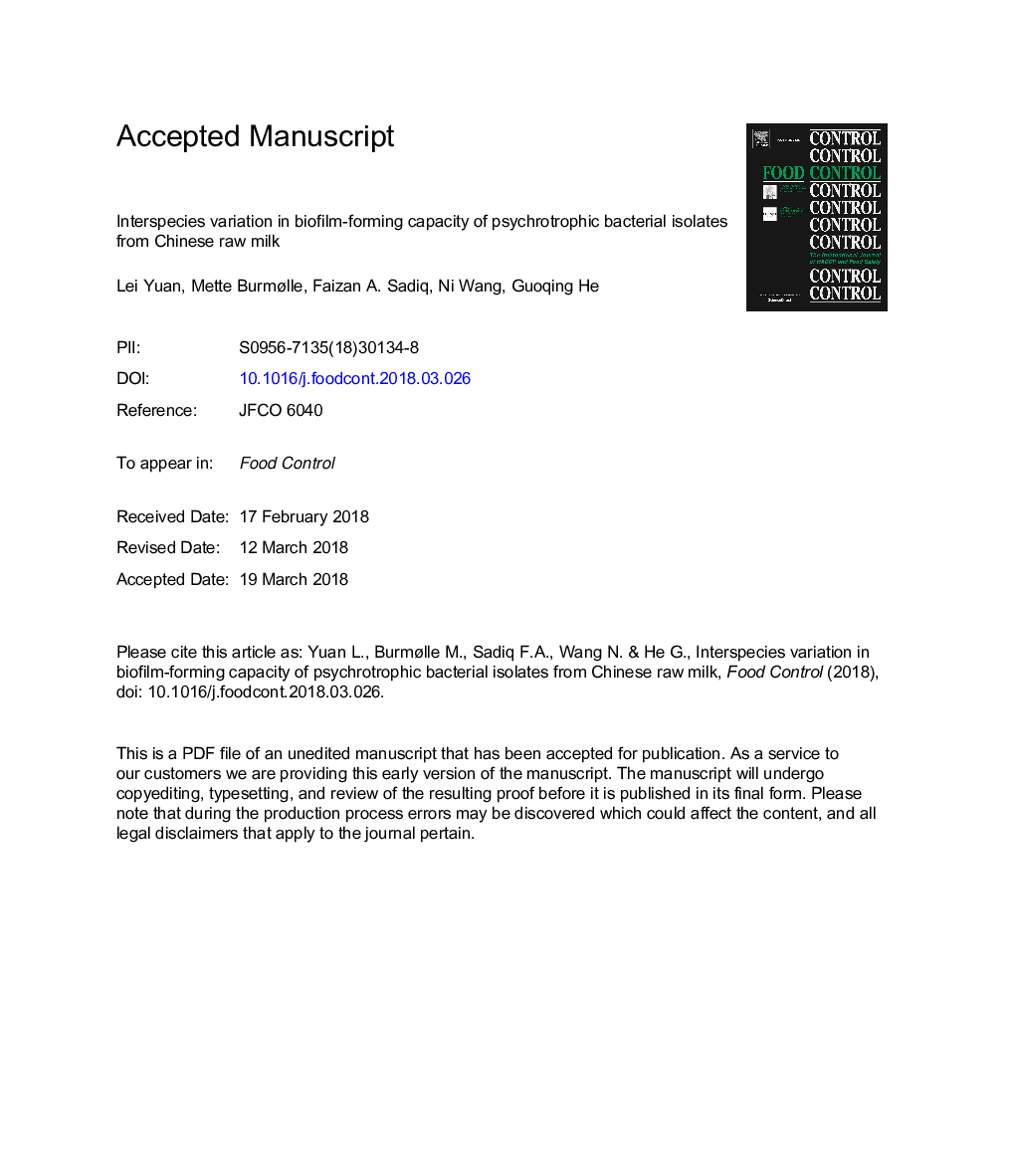| Article ID | Journal | Published Year | Pages | File Type |
|---|---|---|---|---|
| 8887882 | Food Control | 2018 | 32 Pages |
Abstract
Biofilms on the surface of dairy processing equipment act as potential reservoirs of microbial contamination, which may affect product quality and cause substantial risks for consumer health. Biofilm-forming capacity of a high number of psychrotrophic bacterial species of dairy origin at low temperatures has been poorly reported. This work aimed to explore the biofilm-forming potential of bacterial strains (previously identified from Chinese raw milk) belonging to 72 RAPD based genetic groups (representing 11 predominant genera and 61 species) at 7â¯Â°C. Results showed that biofilm formation is a strain-dependent trait, and 25, 10, 19 RAPD groups were weak, moderate and high biofilm formers, respectively, based on results of the crystal violet staining. Isolates of Pseudomonas showed the high tendency to form biofilms. The cell numbers recovered on tryptic soy broth agar plates from surface biofilms ranged from 1.15 to 6.63 log CFU/cm2, and the maximum number was detected for Pseudomonas azotoformans (a) (6.63 log CFU/cm2) followed by Serratia quinivorans (6.39 log CFU/cm2) and Pseudomonas libanensis (6.34 log CFU/cm2). In the presence of skim milk, cell numbers decreased to a range from 1.04 to 6.1 log CFU/cm2, and high cell number was observed in case of P. azotoformans (a) (6.1 log CFU/cm2), P. libanensis (6.07 log CFU/cm2) and S. quinivorans (5.84 log CFU/cm2). A marked variation in biofilm-forming capacity was observed within the strains belonging to the same species. A moderate correlation (râ¯=â¯0.42) between the crystal violet assay of polystyrene and methods based on cell enumeration on coupons was observed. Meanwhile, the cell number of Aeromonas hydrophila recovered from stainless steel increased in co-culture with Pseudomonas fluorescens (a). The results expand the knowledge of biofilm-forming capacity of psychrotrophic bacteria of dairy origin.
Related Topics
Life Sciences
Agricultural and Biological Sciences
Food Science
Authors
Lei Yuan, Mette Burmølle, Faizan A. Sadiq, Ni Wang, Guoqing He,
